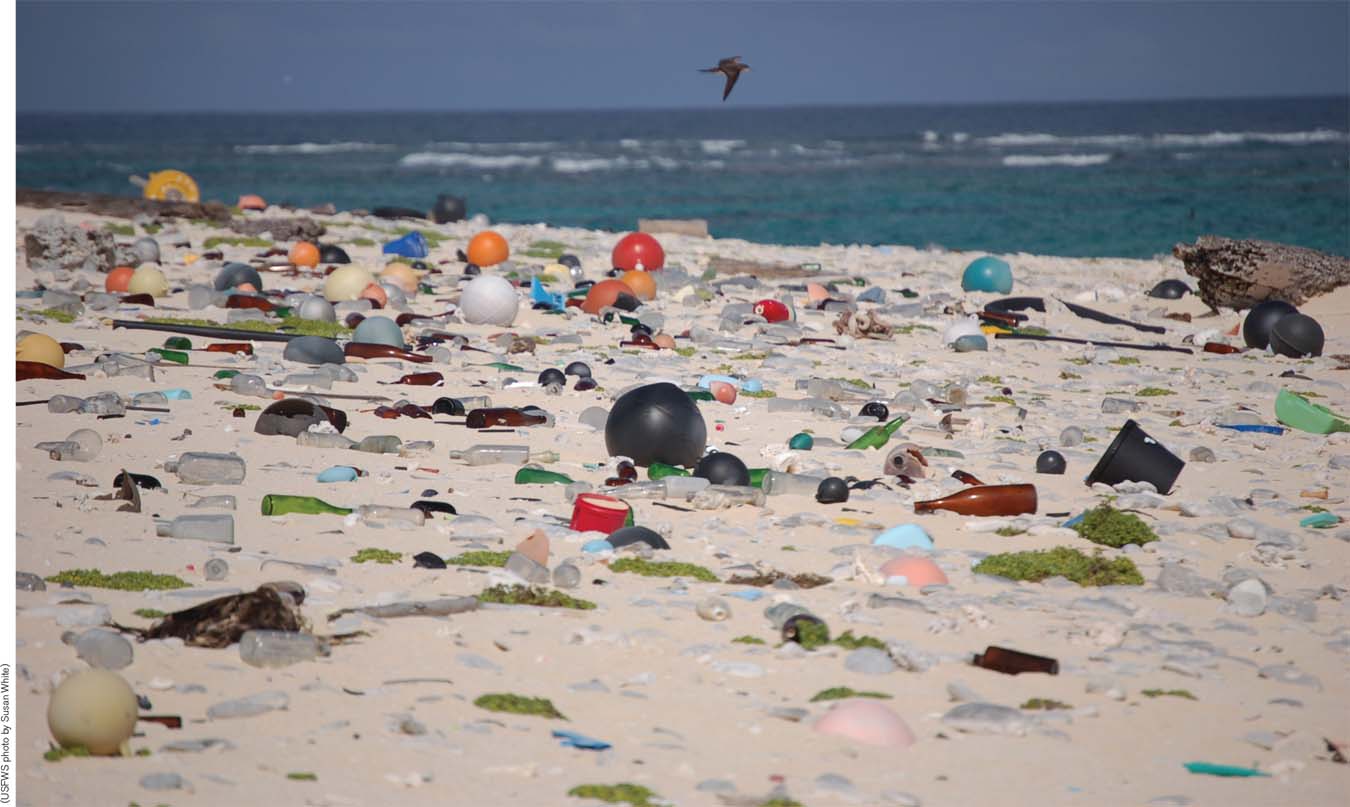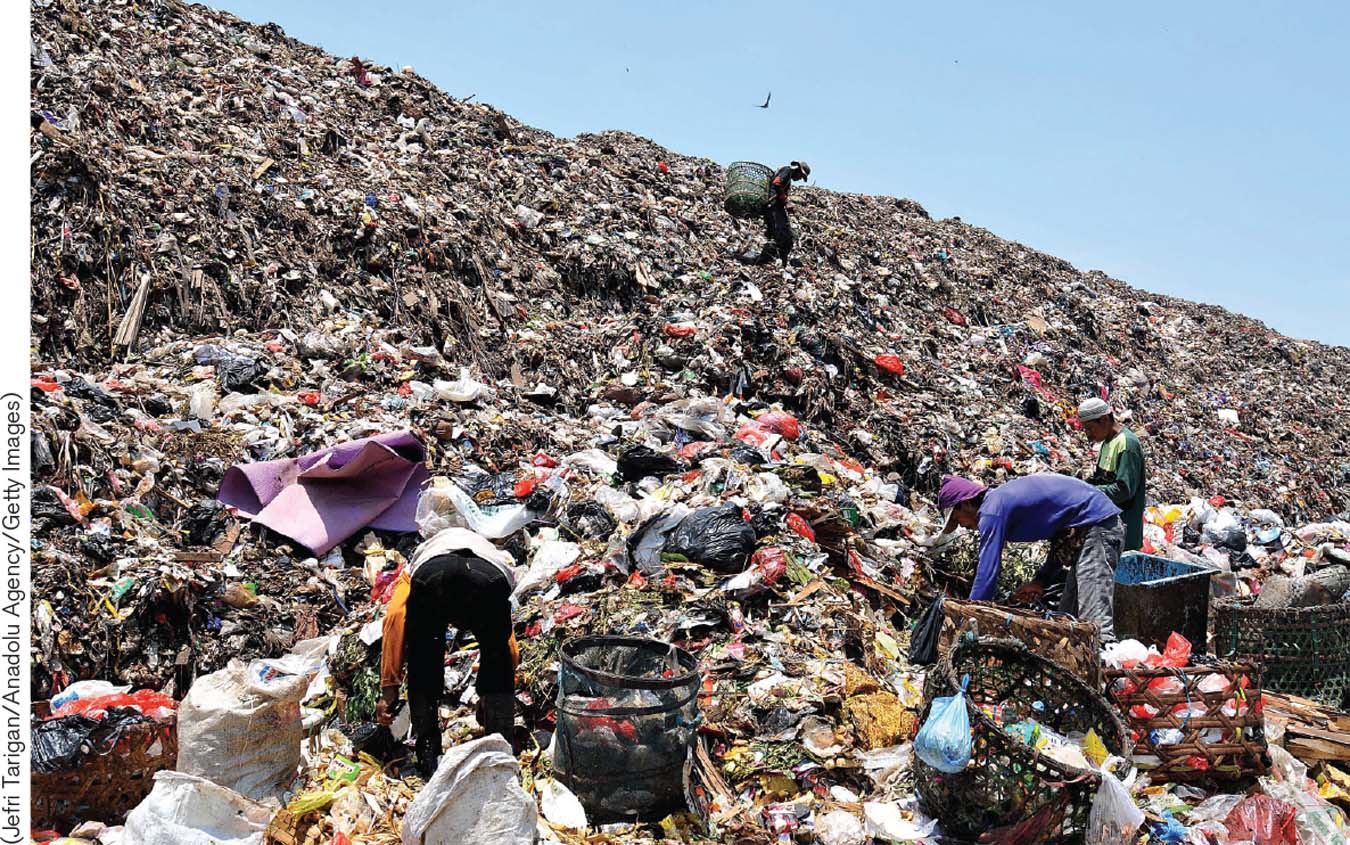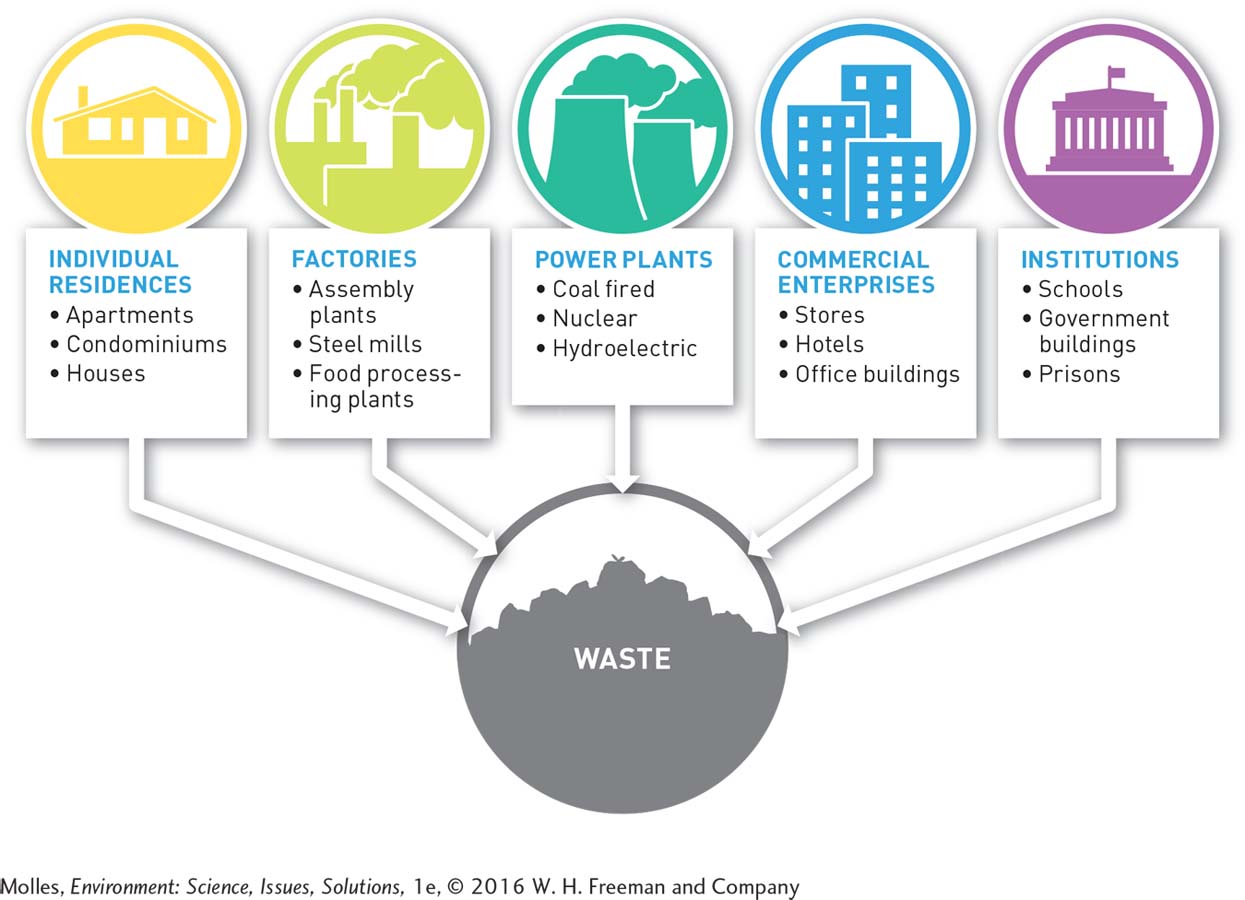12.1–12.2 Science


How do modern garbage heaps differ from those left by ancient people, such as that at Emeryville?
Just north of Oakland, California, lies the Emeryville Shellmound, a pile of discarded clam, mussel, and oyster shells that was once over 60 feet high and 350 feet wide. These are the remnants of more than 2,000 years of habitation by Native Americans. Around the world, it was common to toss out waste in open dumps, and everywhere that humans lived, their trash accumulated. However, as the human population grew and the intensity of economic activity increased, we littered Earth with more diverse types of waste, including toxic waste. In some places, where open dumps are still in use, waste deposits have reached the size of small mountains (Figure 12.1). These growing accumulations on land and sea loom as one of the great environmental challenges. By understanding the way natural ecosystems generate and recycle their own waste, we can find models for how societies might address this challenge.

12.1 The “waste” generated by economic systems does not occur in ecosystems
In the early days of human societies, it didn’t matter much if people just tossed waste out their back windows. They produced little of it and their settlements were small. Critically, most of the waste consisted of natural materials—
With explosive human population growth and development of the modern industrial society, however, the quantity, types, and sources of wastes produced by humans have changed radically (Figure 12.2). Today, much of human waste no longer cycles freely and rapidly but too often meets a dead end—

A first step toward efficiently recycling human-
Every living organism can be reduced to its building blocks, making them available for other organisms. Every resource made by nature returns to nature—
Think About It
What is the eventual fate of elements found within dead plants, animal waste, and other matter?
Earth is a closed system to nearly all forms of matter. How, then, has the biosphere been able to support countless life forms across millions of years?
What basic steps might be taken to make our wastes better able to enter Earth’s natural cycles? (Hint: Consider the carbon cycle in Figure 2.13, page 43, as a model.)